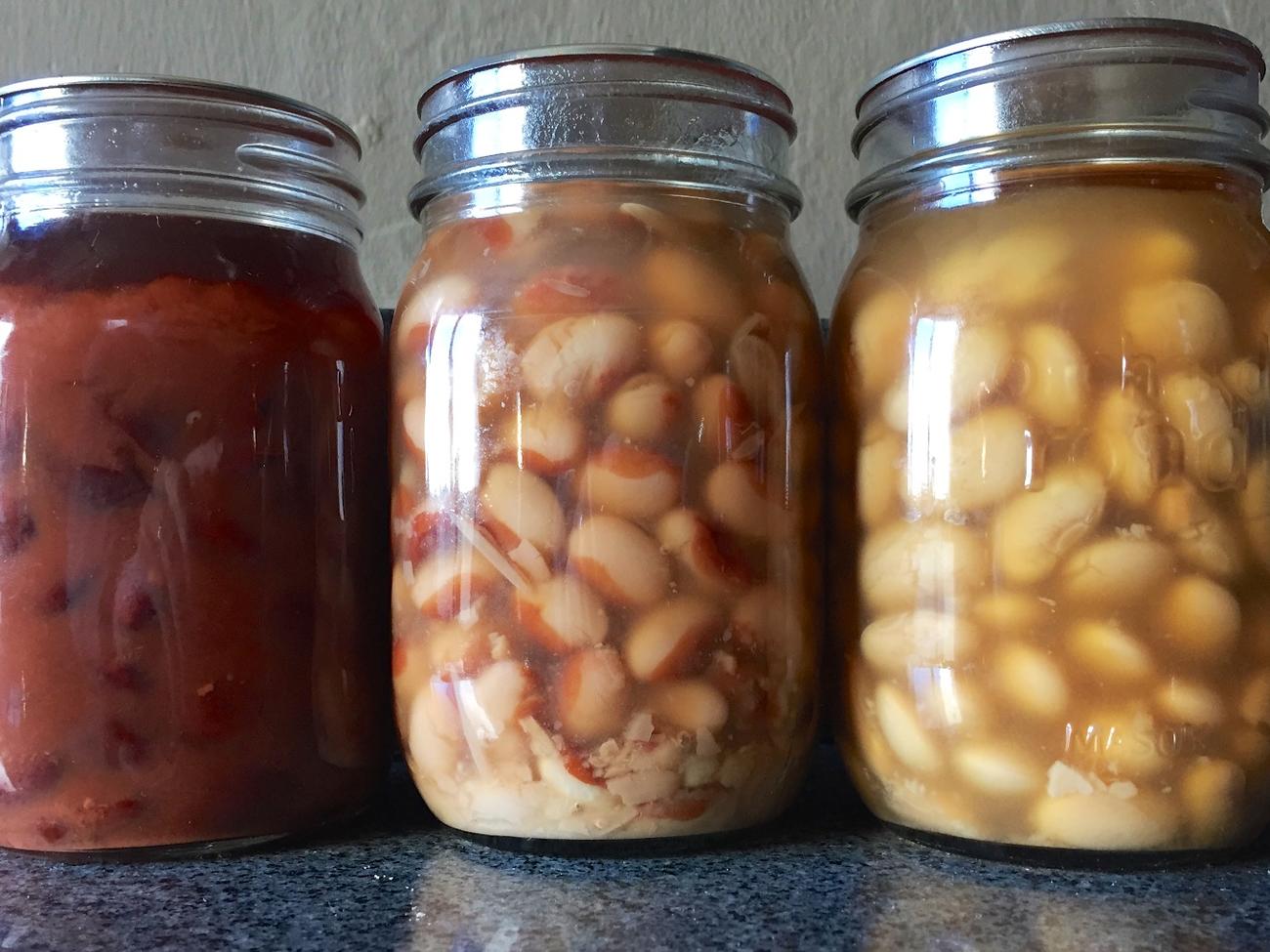
No-Fear Home-Canned Beans

Photograph by Sean Timberlake.
Sean Timberlake is the affable, knowledgeable founder of Punk Domestics—an online trove of techniques and recipes for food preserving. He also writes Hedonia, about living the good life in San Francisco. This fall and winter, he’s leading culinary tours to Italy, complete with hands-on cooking and foraging classes with local cooks.
Most of my friends who are new to home canning overcome any reticence the first time they hear the “ping” of jars filled with homemade jam, successfully sealing. Pressure canning, though, evokes a greater fear—often accompanied by horrific visions of exploding pots spraying sauces ceiling-high.
Used correctly, though, modern pressure canners are completely safe. Once you’ve overcome the fear factor, you’ll come to love their convenience and practicality. (I use them for everything from tomato sauce to jam to bone broth.)
Also, they can be indispensable: Pressure canning is required when preserving low-acid foods. It’s not necessary for most fruit preserves, like jams and jellies, because they are naturally high enough in acid to stave off the growth of the Clostridium botulinum bacteria that is responsible for botulism poisoning.
Low-acid foods—like stock, meats, non-pickled vegetables and beans—are another matter. When acid levels are low, the only way to kill the bacteria is with extreme heat, specifically 120º Celsius or higher, or 248º Fahrenheit or higher. This cannot be achieved with regular boiling water, clocking in at just 212ºF. The pressurized environment inside a pressure canner raises the temperature sufficiently to knock out the bacteria.
Enough scary science; let’s get back to the convenience factor. One of my favorite things to pressure-can is beans. In just a few steps, you can transform dried beans into sealed jars of tender, creamy beans ready to eat with the flip of a lid—so much better than storebought, and less expensive, too.
PRESSURE-CANNED BEANSFirst, read the instructions for your pressure canner. Depending on whether it’s dial-gauge or weight-gauge, the instructions may be different. Also, if you live above 1,000 feet, you’ll need to adjust your pressure accordingly.
What follows are instructions for a dial-gauge canner at sea level.
1. Prepare your canner, and have clean pint jars, lids and rings—about 6 for every pound of beans—at the ready. There is no need to sterilize the jars, as the pressure-canning process will take care of that.
2. Pick through your beans and remove any stones or foreign objects, as well as beans that are irregular or broken.
3. Place the beans in a large stockpot and add enough water to cover completely. Bring to a boil, then reduce heat and simmer for 30 minutes. Skim away any foam. Drain the beans, reserving the liquid in a large bowl. To each jar, add ½ teaspoon of kosher salt, one dried bay leaf, and, if desired, a couple of dried chiles. Ladle in enough beans to fill the jars 2/3 full. Ladle in the reserved bean broth to fill the jar, up to 1” below the rim. This space is called headspace, and it’s important for the jars to seal properly.
If you are using very fresh dried beans—such as recently purchased bags from Rancho Gordo or beans from your local farmers’ market—you can instead fill the jars halfway with dried beans without cooking them first, and ladle in boiling water (leaving the headspace as mentioned above). Steve Sando of Rancho Gordo uses this method himself, with good results.
4. Run a clean chopstick or a thin spatula around the interior of the jars to release any trapped air. Set the lids on the jars and screw on the rings until just finger-tight. Lower the jars into the canner. Cover the canner and turn the heat to high.
5. When the water in the canner boils, you’ll see steam coming out of the valve on top. Let the steam vent for 10 minutes, then set the weight on the vent port. This will trap the steam, causing pressure to rise. Watch the gauge carefully. When internal pressure reaches 11 pounds, reduce heat, and maintain that pressure as consistently as possible for 75 minutes. If the pressure dips below 11 pounds, return to that pressure and start timing anew.
6. Remove from heat and allow the canner to drop in pressure. When the pressure has completely dropped, let rest for 10 minutes, then remove the lid, being careful to open away from you (it will release hot steam!). Remove the jars with jar tongs to a towel or cooling rack, and let rest, undisturbed, for 24 hours. If any lids do not seal, store in the refrigerator and use promptly.
Sealed jars will keep at room temperature for one year.


